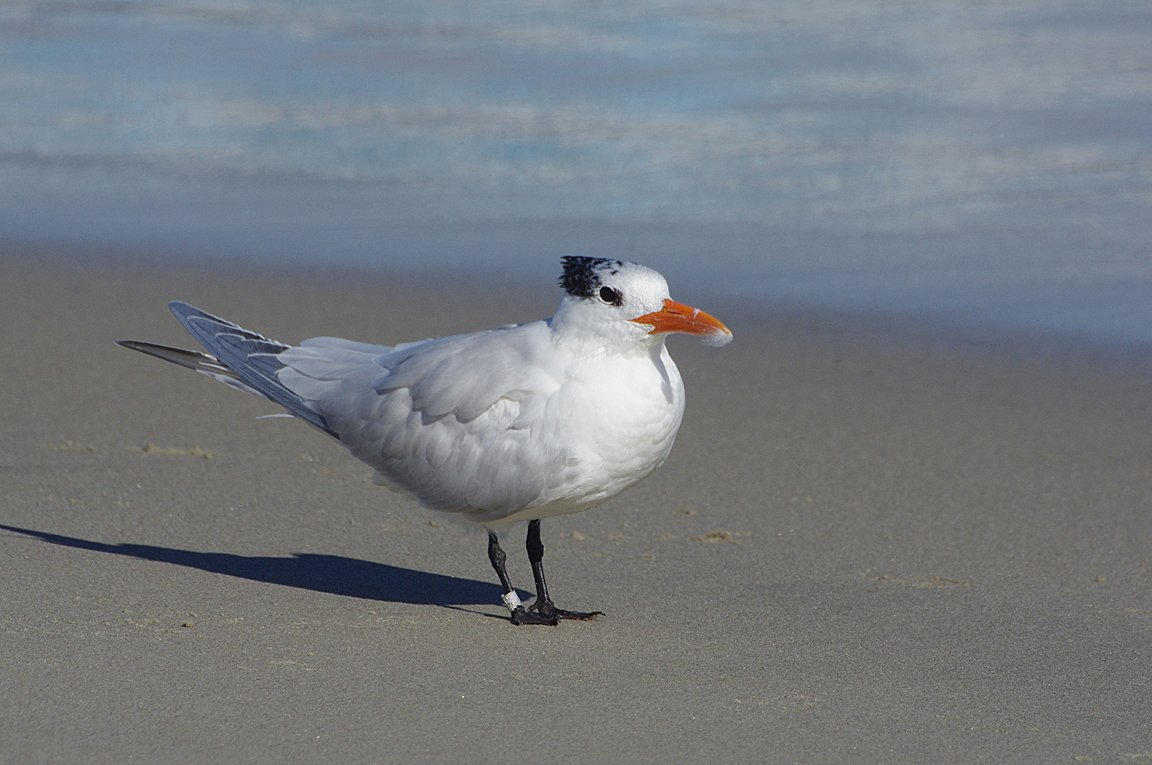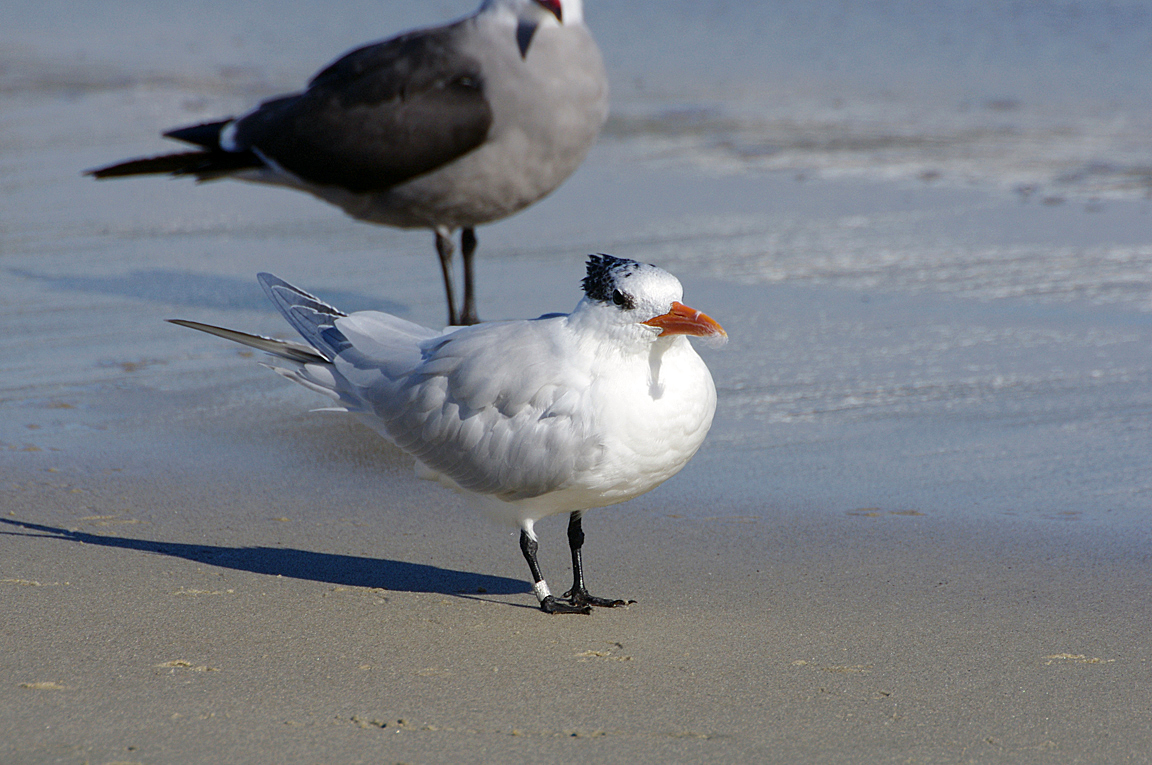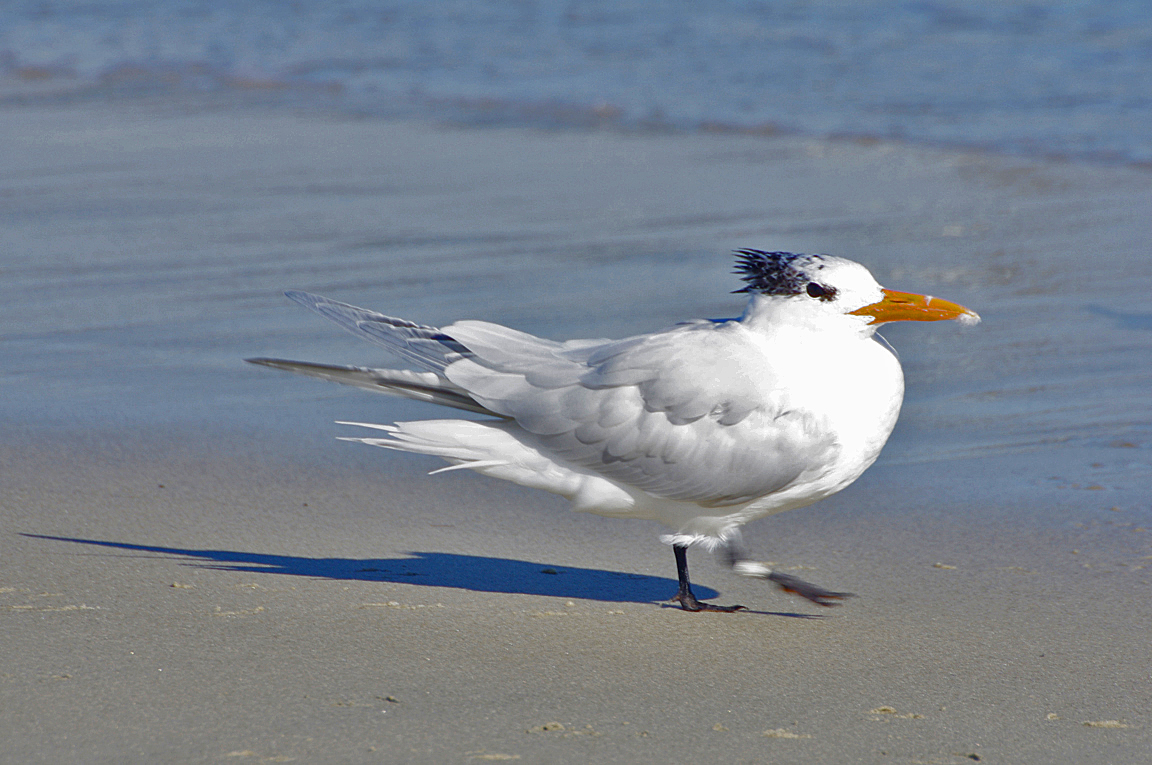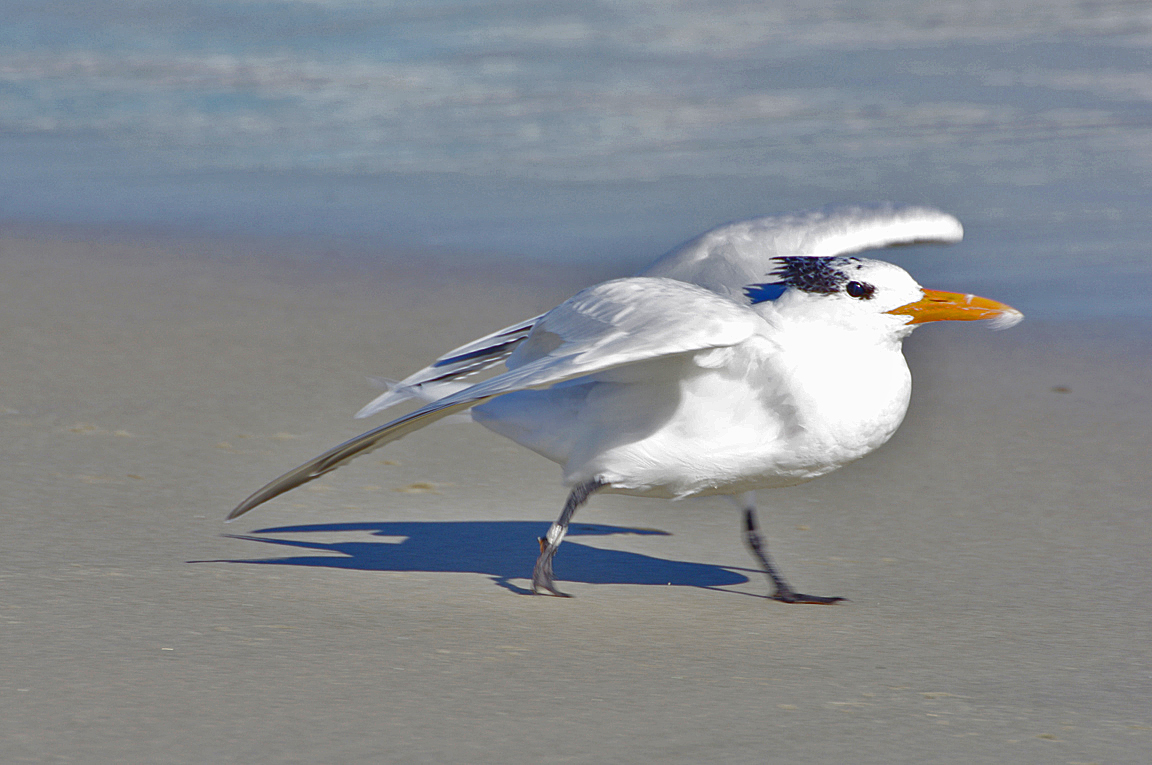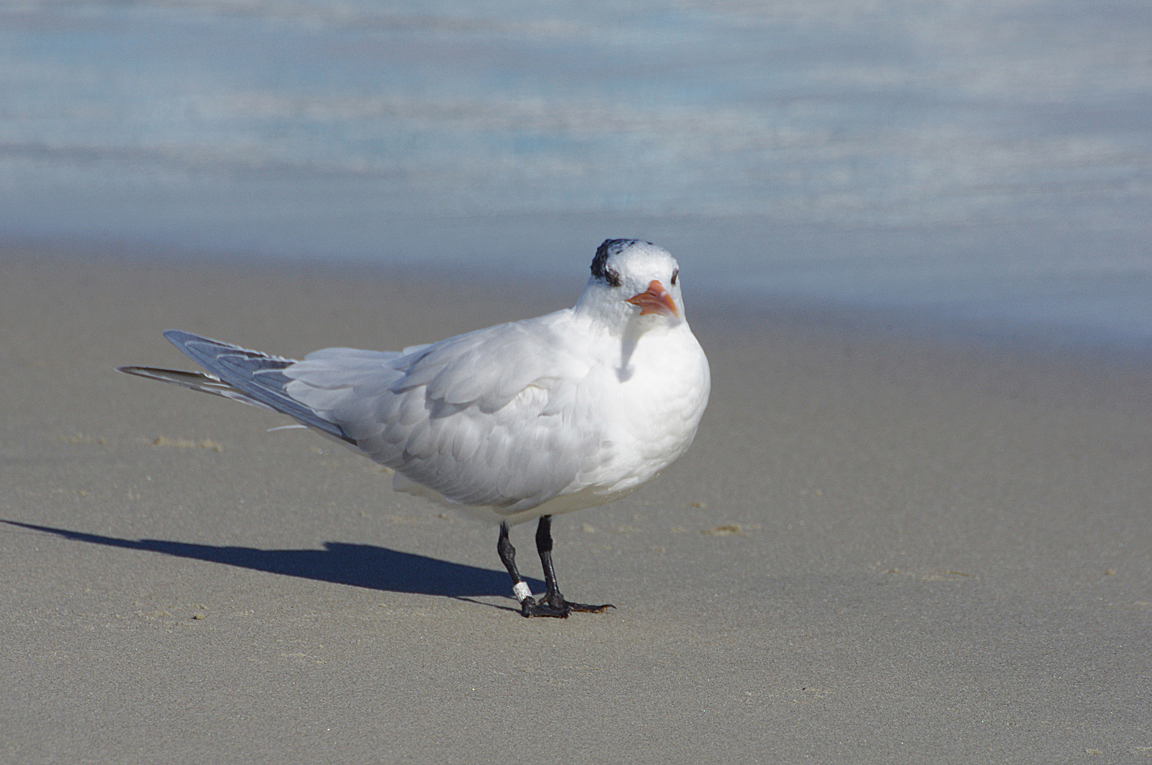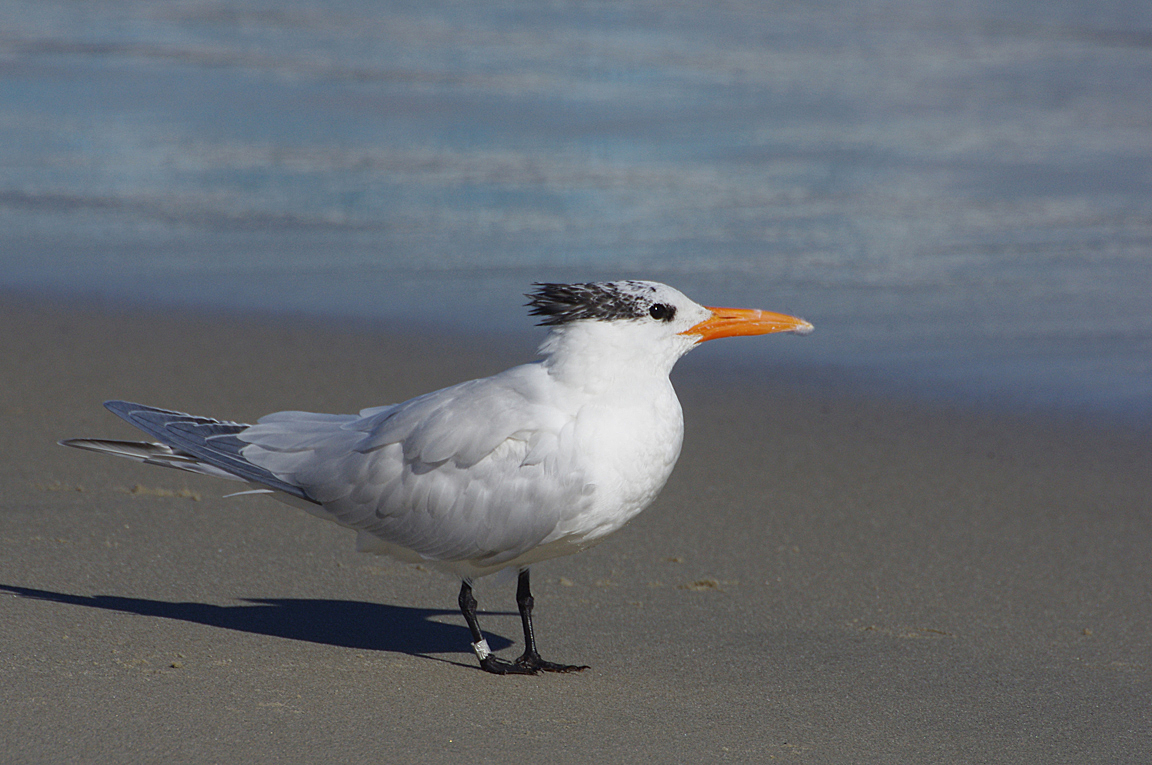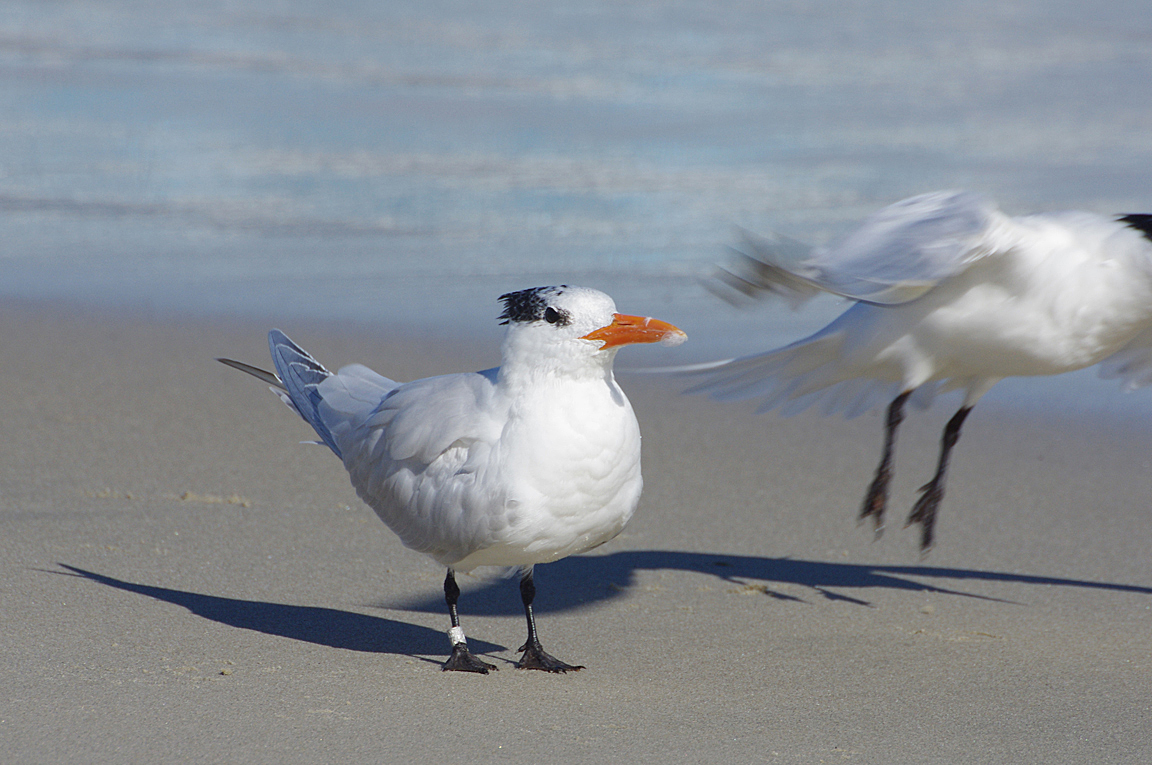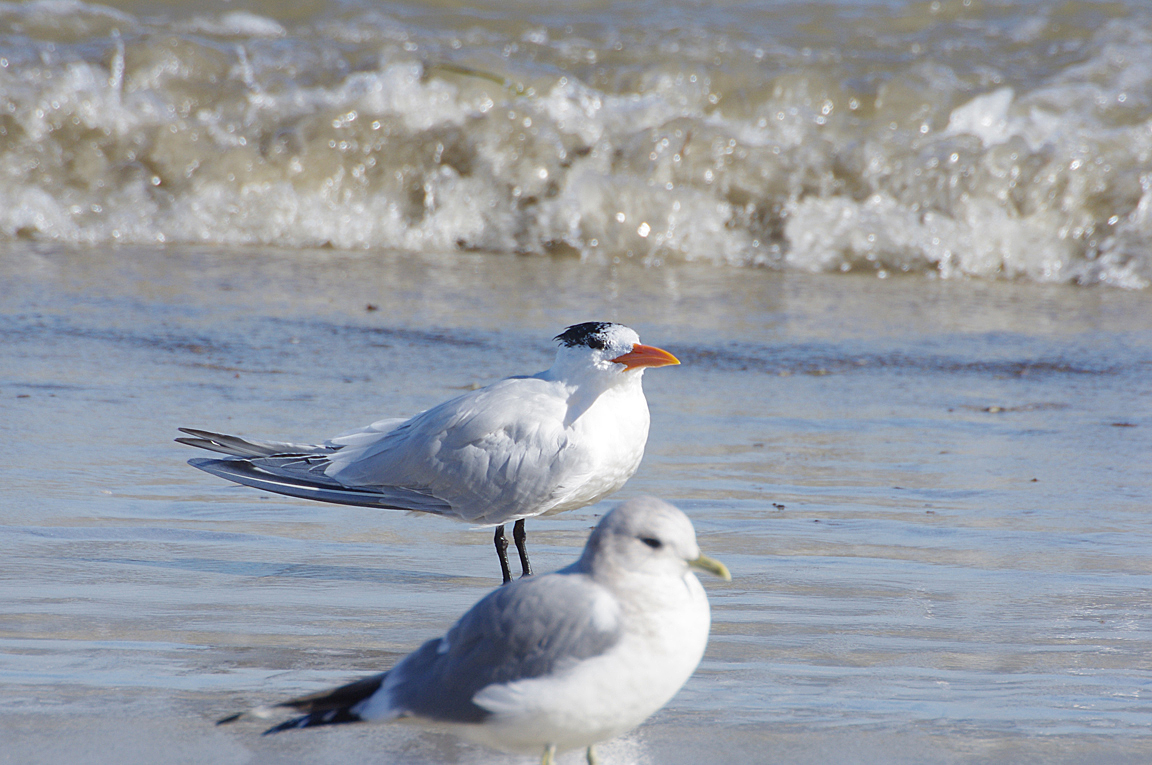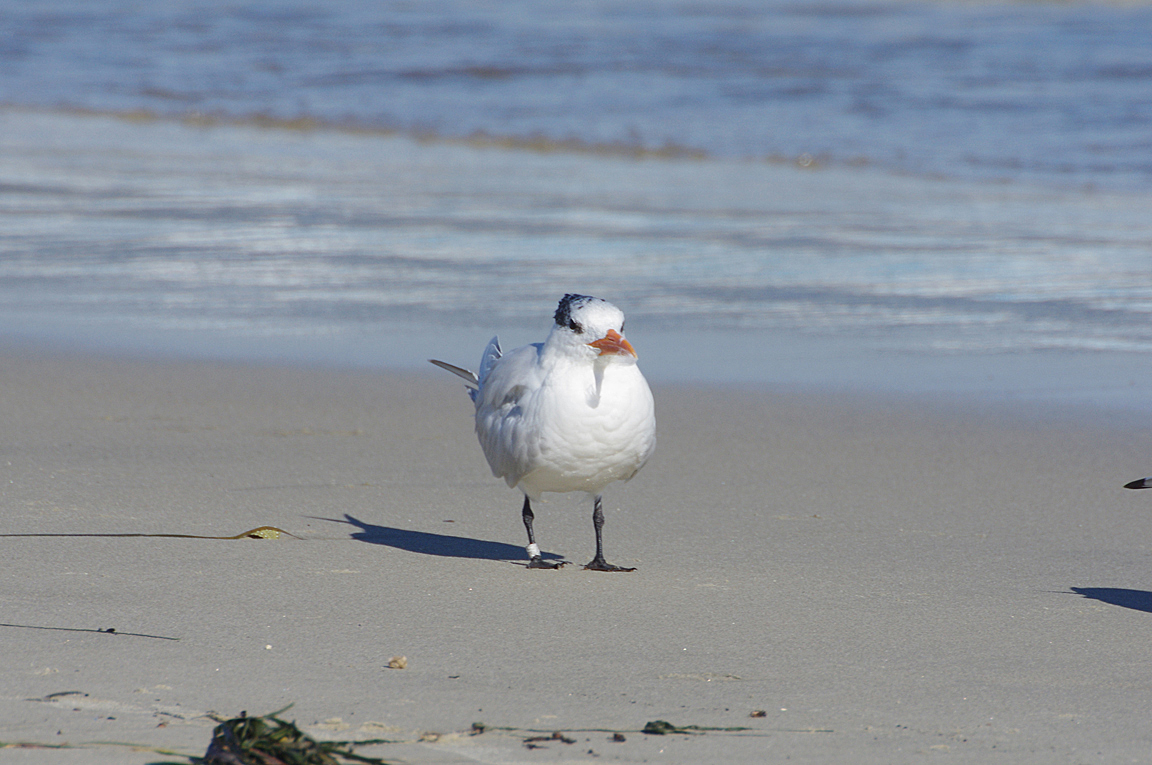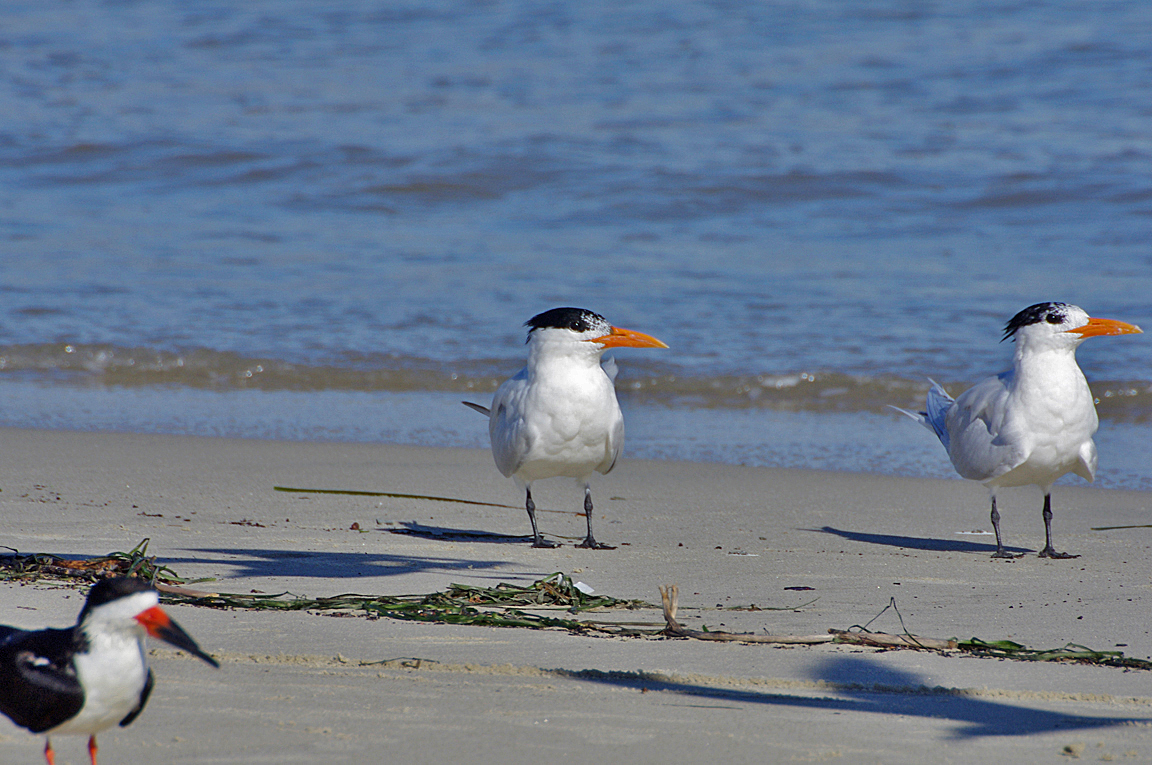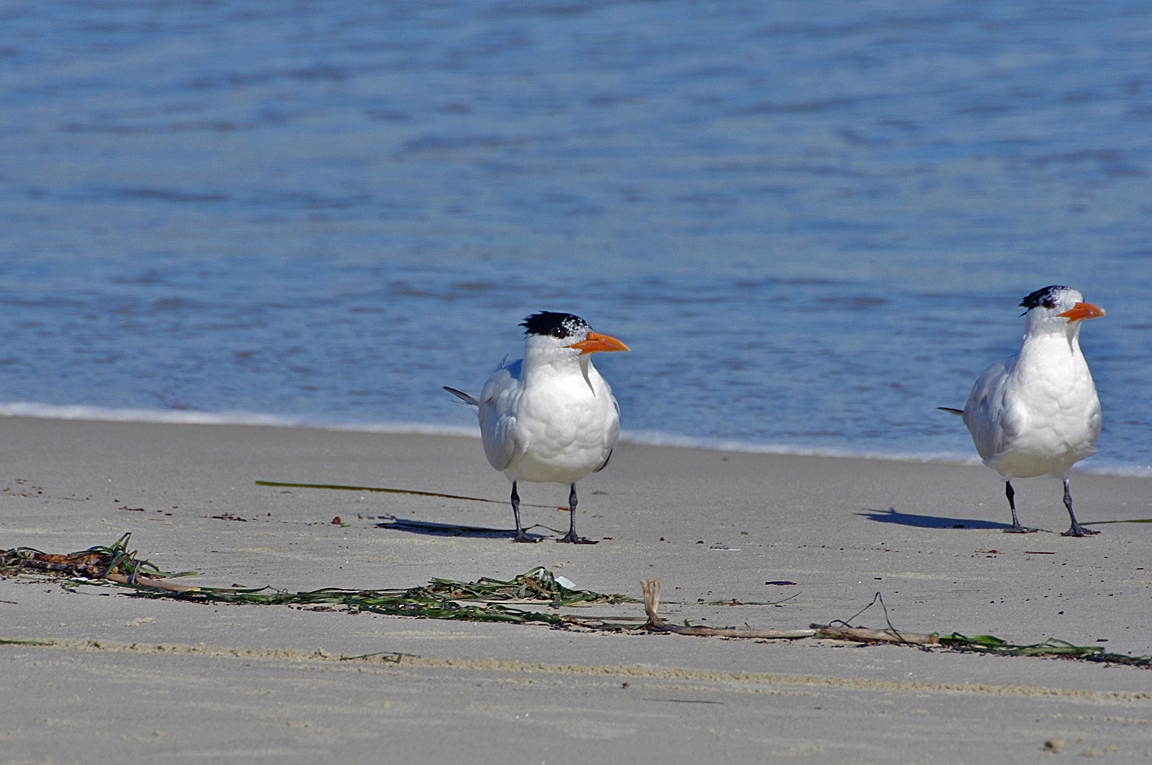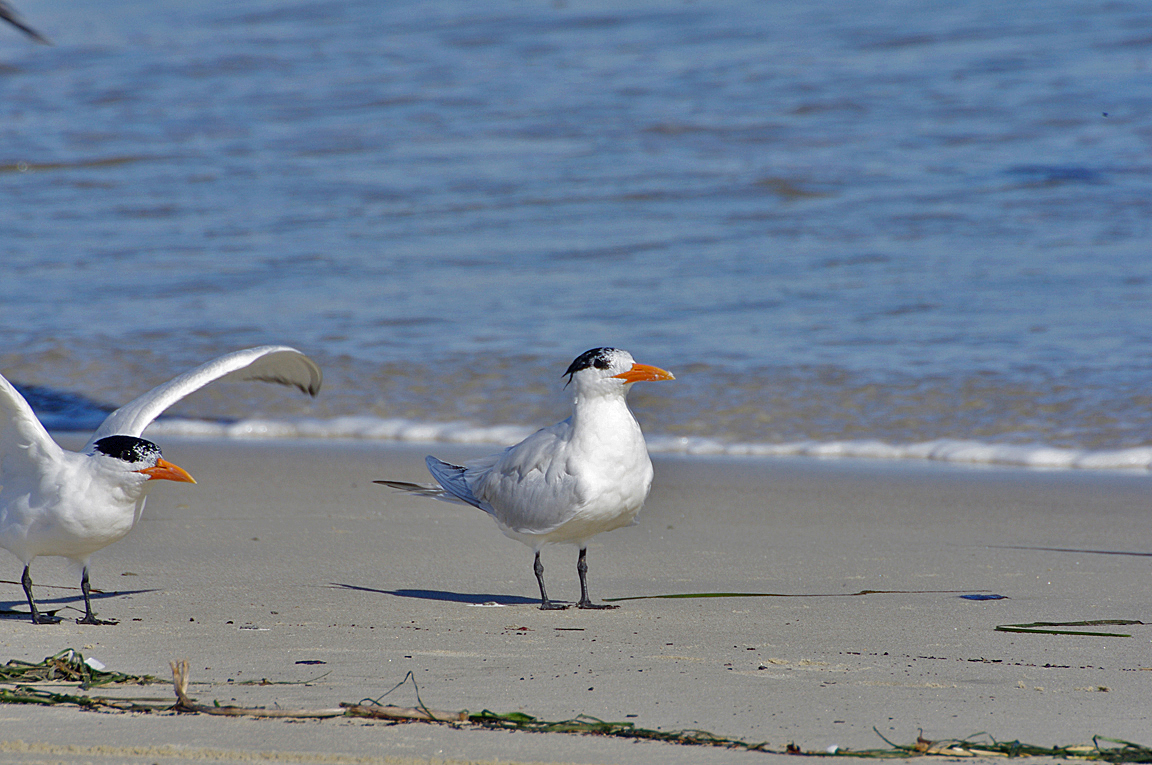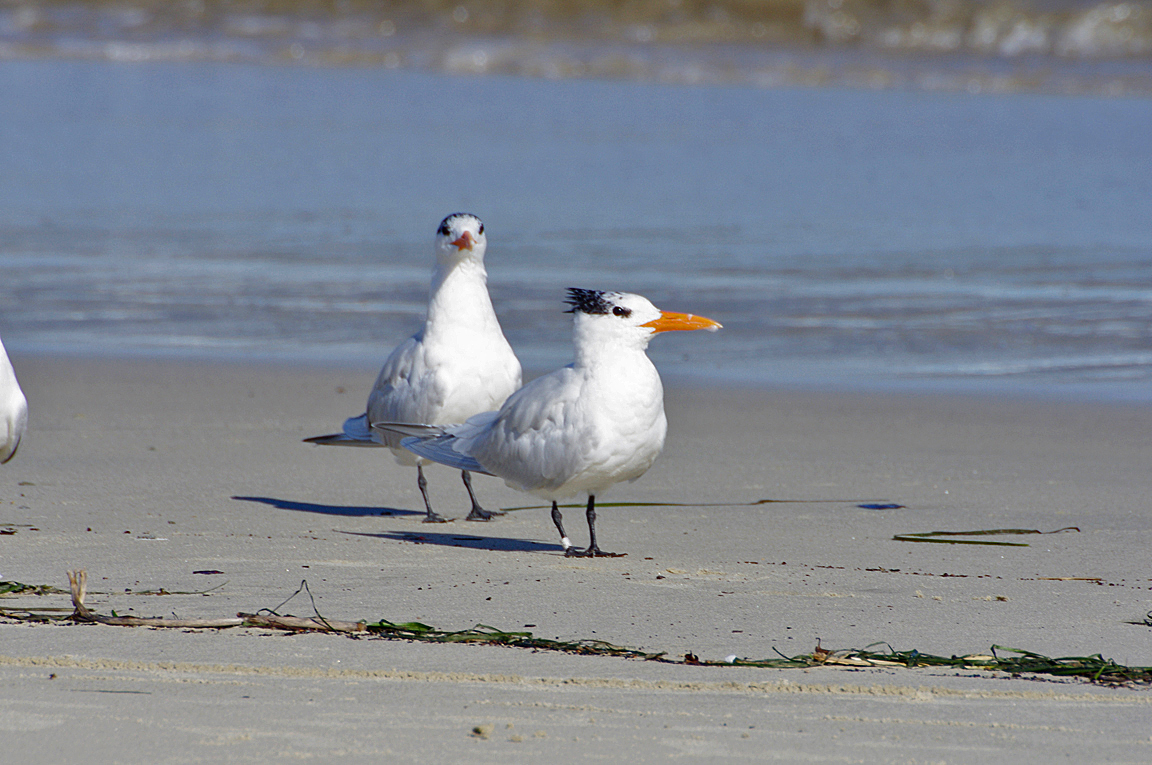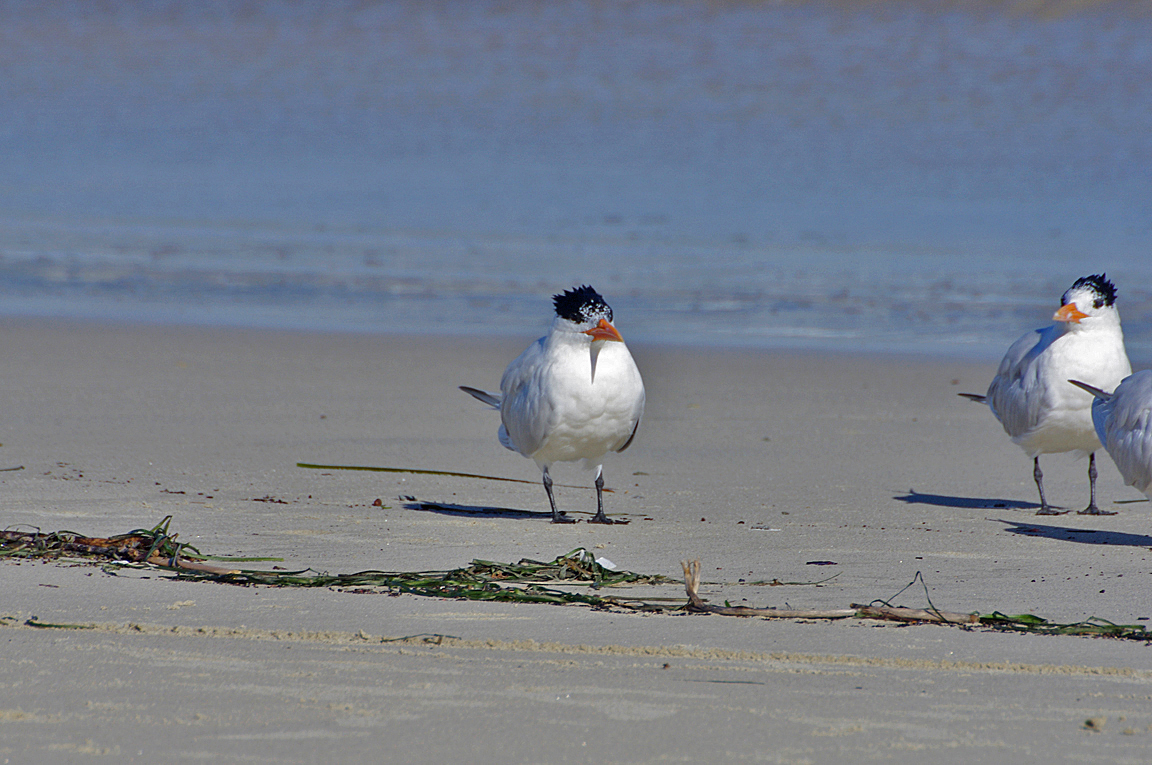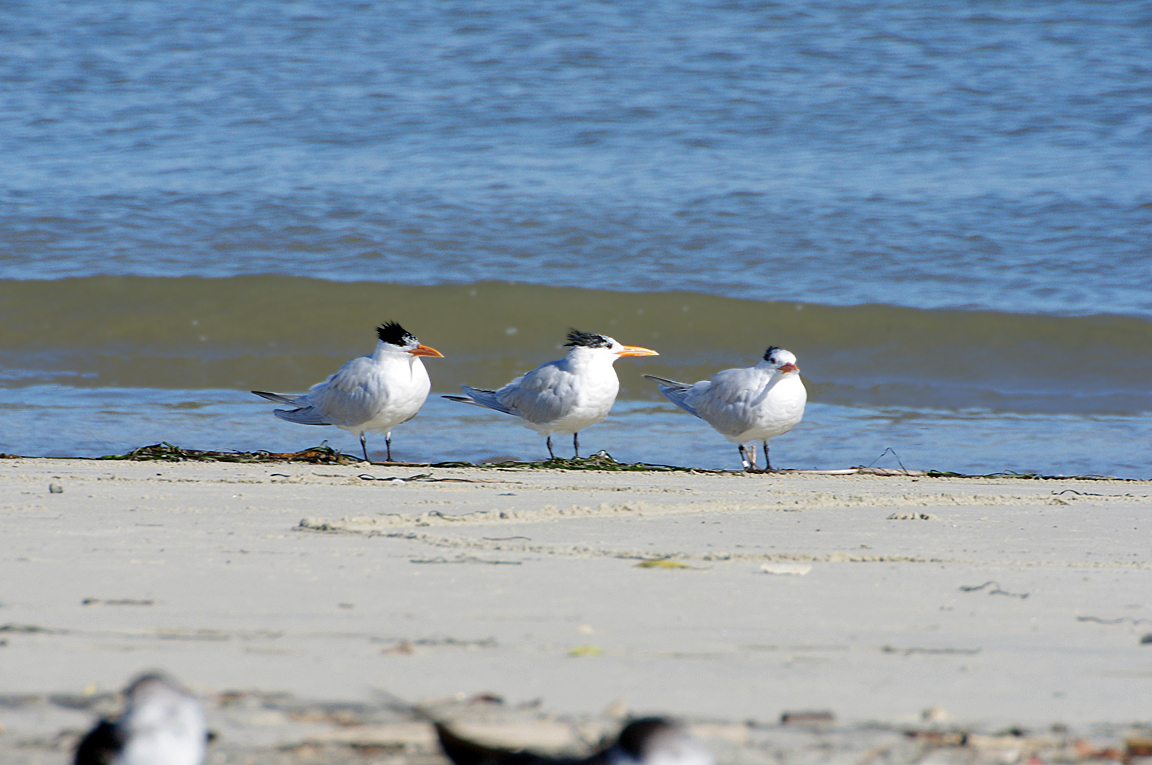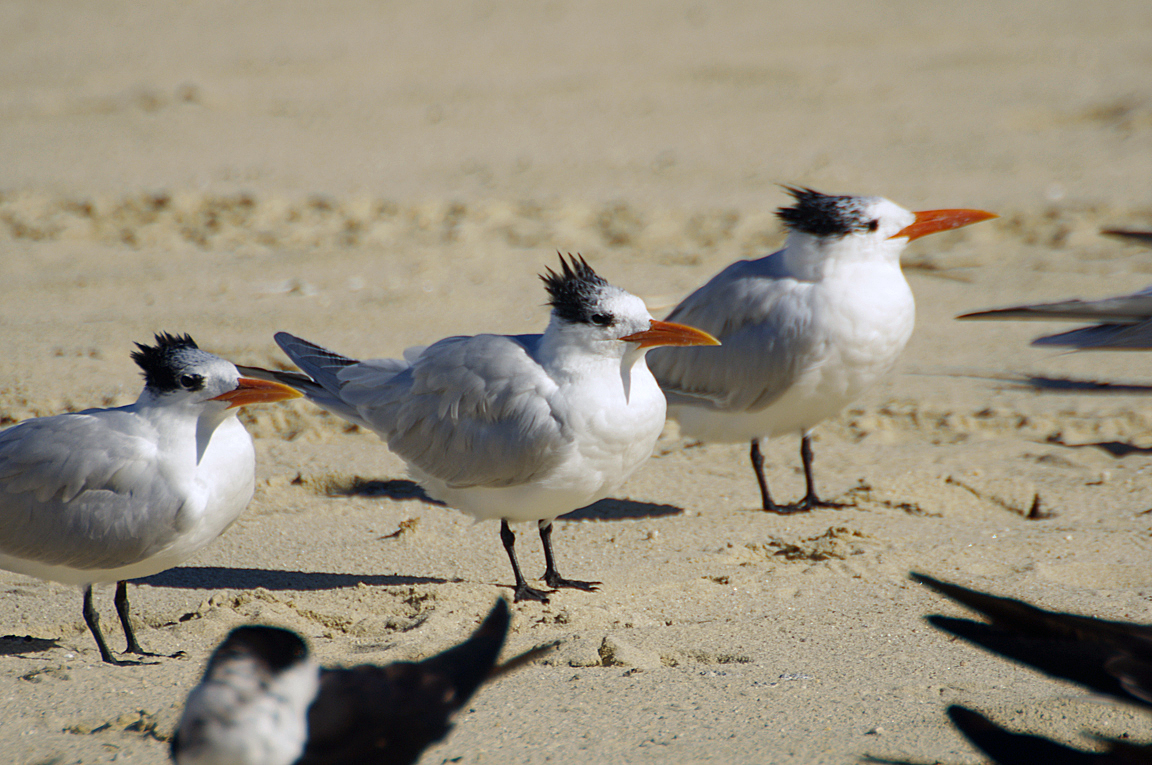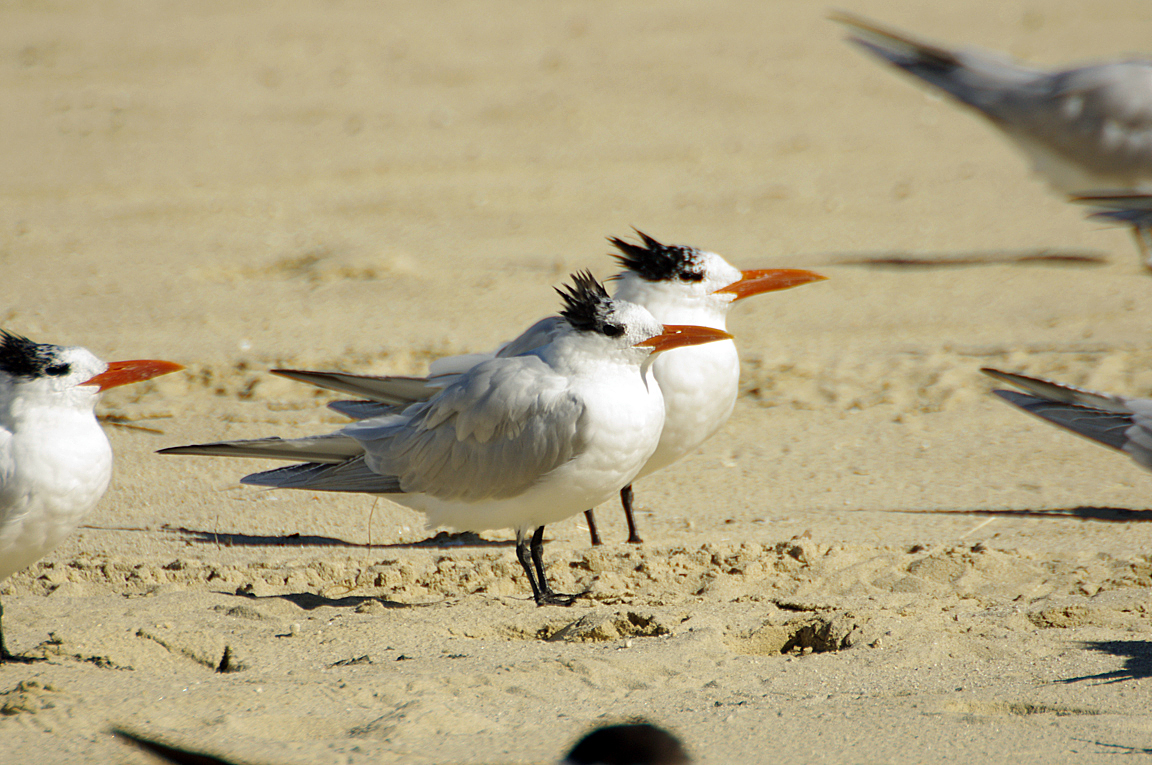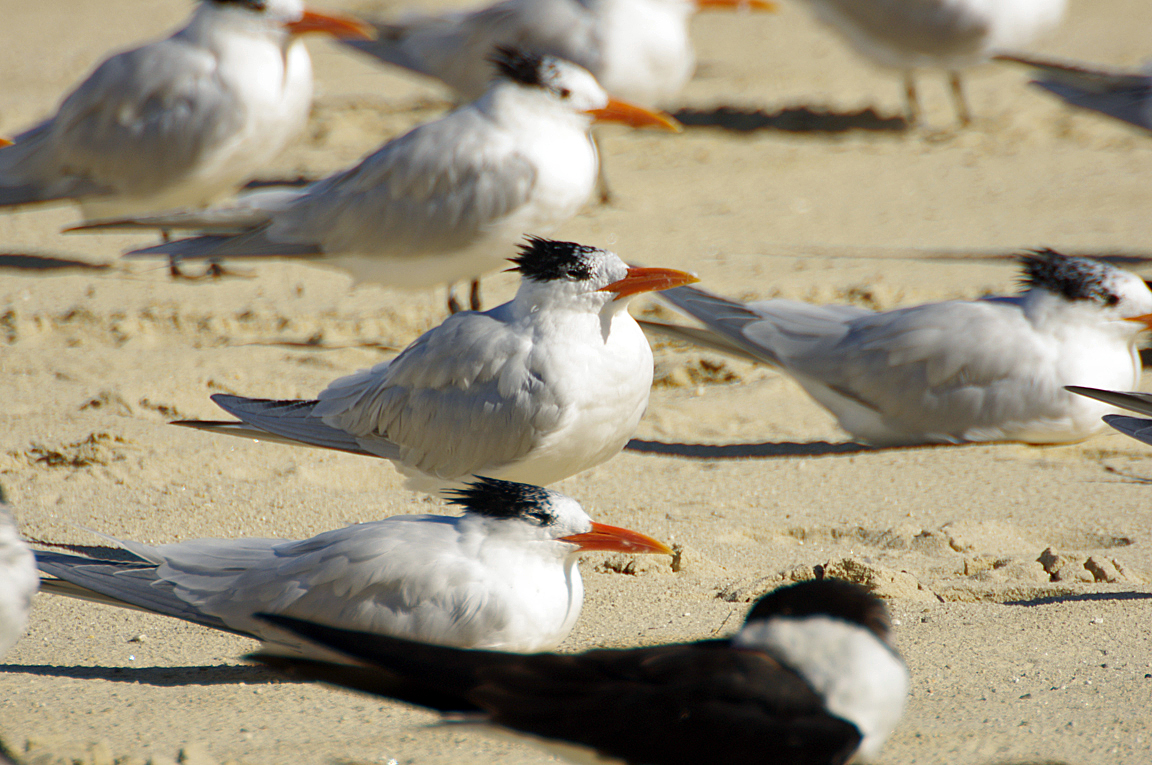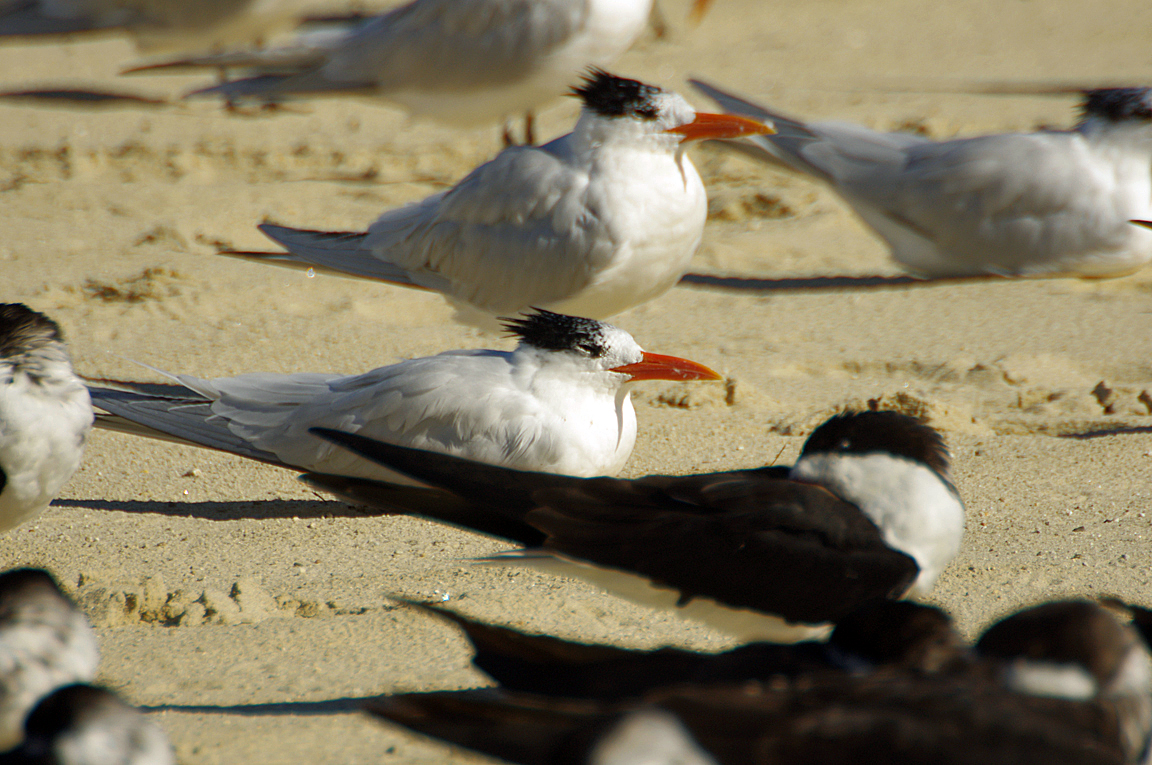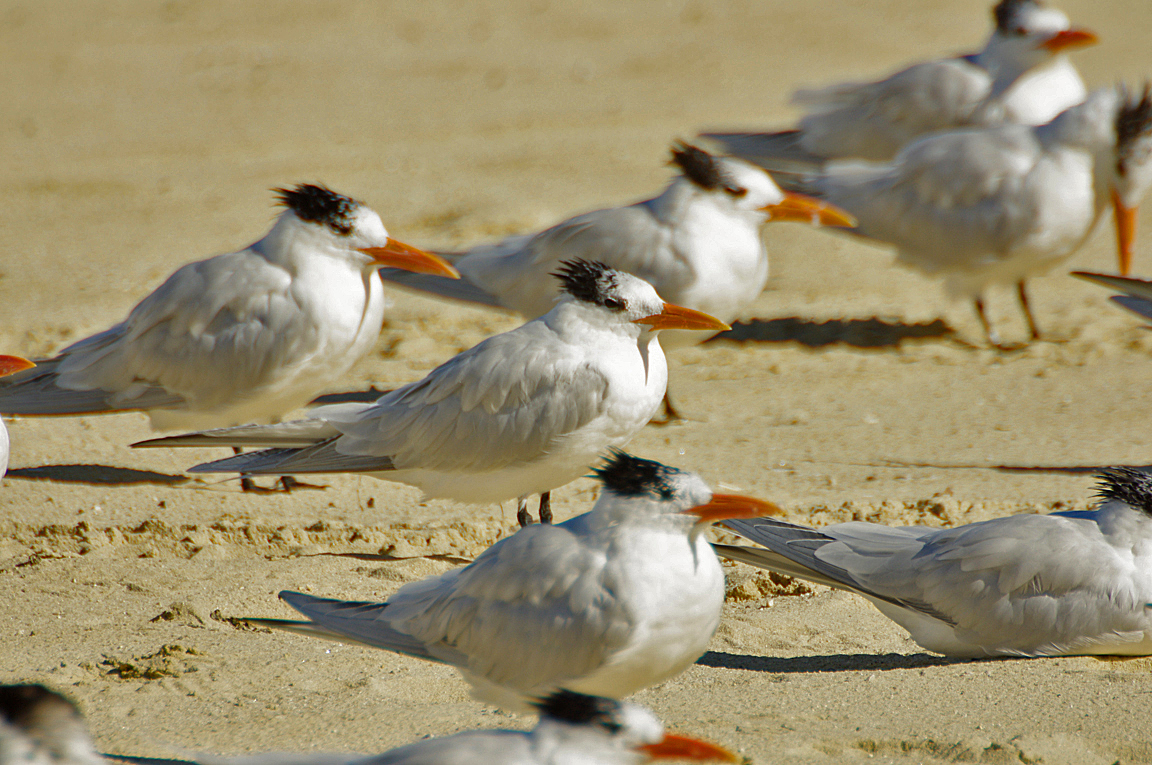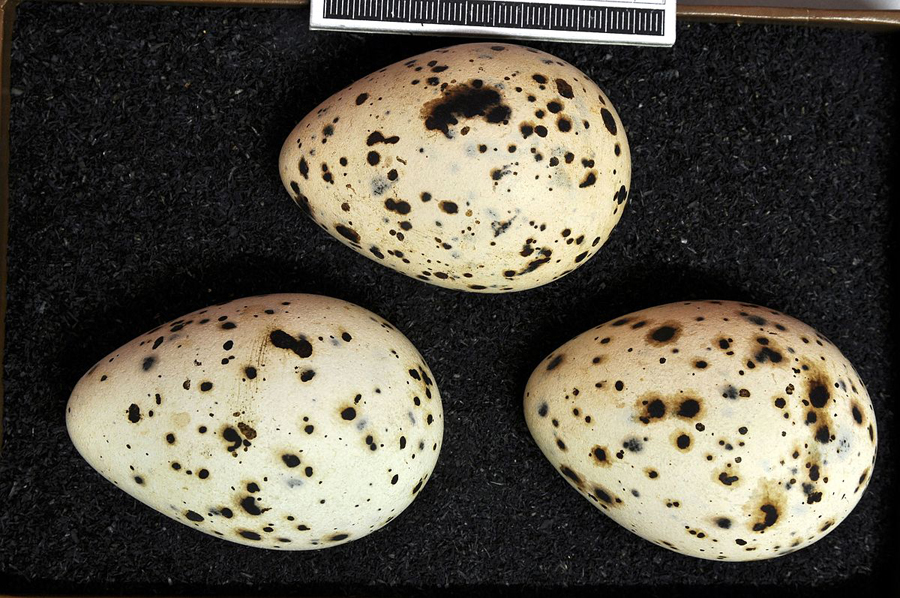|
|
|
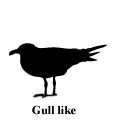 |
Royal Tern
|
| Sterna maxima | |
A large, orange-billed tern, the Royal Tern is found only along ocean beaches.
Interesting Information
-
The Royal Tern makes its nest scrape on the ground on low-lying islands. The pair defecates directly on the nest rim, perhaps to reinforce the nest against flooding. After a few weeks, the nest rim hardens.
-
Young Royal Terns leave the nest scrape within one day after hatching and congregate together in a group known as a crèche. Eventually all of the chicks in a colony come to the crèche, which can have thousands of chicks ranging in age from two to 35 days old. A pair of Royal Terns will feed only their own chick, and manage to find it in the crowd, probably by recognizing its call.
Description
Adult Description
-
Length Range: 46-53 cm (18-21 in)
-
Weight: 453 g (16 oz)
-
Size: Large (16 - 32 in)
-
Large tern.
-
Slender orange bill (from yellow to reddish).
-
Short, forked tail.
-
Black in a narrow, shaggy band around back of head; forehead white. (Complete black cap held only briefly during breeding.)
-
Mostly white all over, with some dark in wingtips.
Sex Differences
Sexes Similar
Immature
Juvenile similar to nonbreeding adult, but bill smaller and pale yellow, back with variable amounts of dark spotting, and wingtips darker.

Photo taken from: The Sibley Field Guide by David Allen Sibley
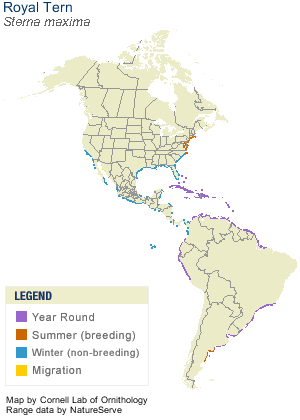
© 2003 Cornell Lab of Ornithology
|
Habitat |
|
|
Behavior |
|
Flies over water with bill pointing down; plunges into water to catch fish. |
|
Food |
|
Fish and shrimp. |
Taxonomy
| Kingdom: | Animalia |
| Phylum: | Chordata |
| Subphylum: | Vertebrata |
| Class: | Aves |
| Order: | Charadriiformes |
| Family: | Laridae |
| Subfamily: | Sterninae |
| Genus: | Sterna |
| Species: | Sterna maxima |
| Subspecies: | Sterna maxima maxima |
Similar Species |
|
|
Bird Sound |
|
Call a loud, rolling "keer-reet." |
|
Eggs look like this |
|
Photo taken from: ARCTOS Collaborative Collection Management Solution |
